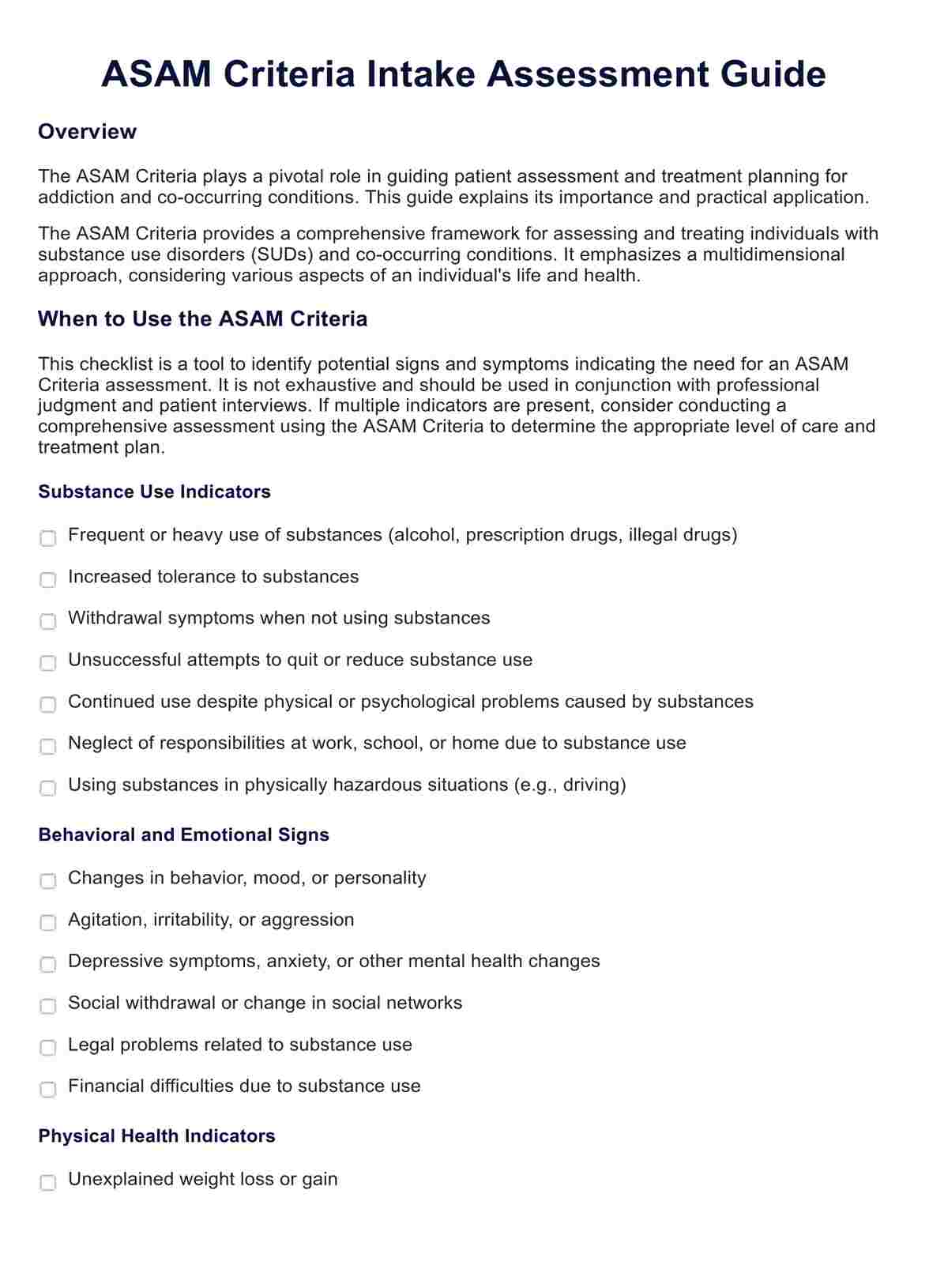An ASAM dimensions treatment plan should be used whenever an individual seeks help with substance abuse. It can provide guidance and direction throughout the recovery process.

ASAM Dimensions Treatment Plan
An ASAM dimensions treatment plan is a comprehensive approach to addiction recovery. Download the PDF and learn more about the plan's key components.
ASAM Dimensions Treatment Plan Template
Commonly asked questions
ASAM dimensions treatment plans are helpful because they provide a comprehensive view of the patient's care and allow you to track progress, set realistic goals, provide structure and guidance, and identify strengths and weaknesses. It also allows you to tailor the plan to individual needs.
It is crucial to individualize an ASAM dimensions treatment plan because every individual has different needs, and a customized plan can ensure they receive the best possible care.
EHR and practice management software
Get started for free
*No credit card required
Free
$0/usd
Unlimited clients
Telehealth
1GB of storage
Client portal text
Automated billing and online payments











